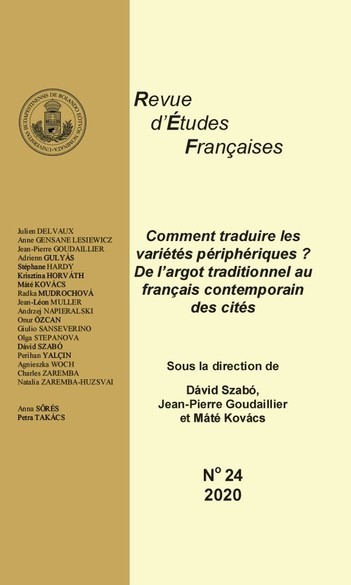Jean-Pierre Goudaillier

Revue d’Études Françaises
No 24 (2020)
p. 123-138
DOI : 10.37587/ref.2020.1.10
Peut-on traduire le « pataouète » ? L’exemple de textes extraits de l’oeuvre d’Albert Camus
Jean-Pierre Goudaillier
How to translate the ‘pataouète’ in the case of texts by Albert Camus? During the French colonization of Algeria, the ‘patatouète’ was a language variety of French spoken in North Africa, among others in working class districts of Algiers, such as Bab-el-Oued and Belcourt. It consisted mainly of French [colloquial style and slang], Arabic, Berber, Spanish [Catalan] or Italian terms like: avoir la honte à la figure, chikaïa, donnade, donner un taquet, faire la mata, galoufa, gargoulette, kémia, macache, moutchou, pignol, sarouel, tannée, taouel, tramousse, yaouled, zlabia. Albert Camus was born in the Belcourt district where he spent his youth (cf. The First Man) ; thus it is not surprising to find a limited number of ‘pataouète’ expressions in his works the rendering of which might be quite challenging for translators, as illustrated by the analysis of English and German translations of Camus’ novels such as The Stranger or The First Man.
Pour lire cet article, veuiller consulter le pdf ci-dessous.
| Jean-Pierre Goudaillier : Peut-on traduire le « pataouète » ? L’exemple de textes extraits de l’oeuvre d’Albert Camus |

